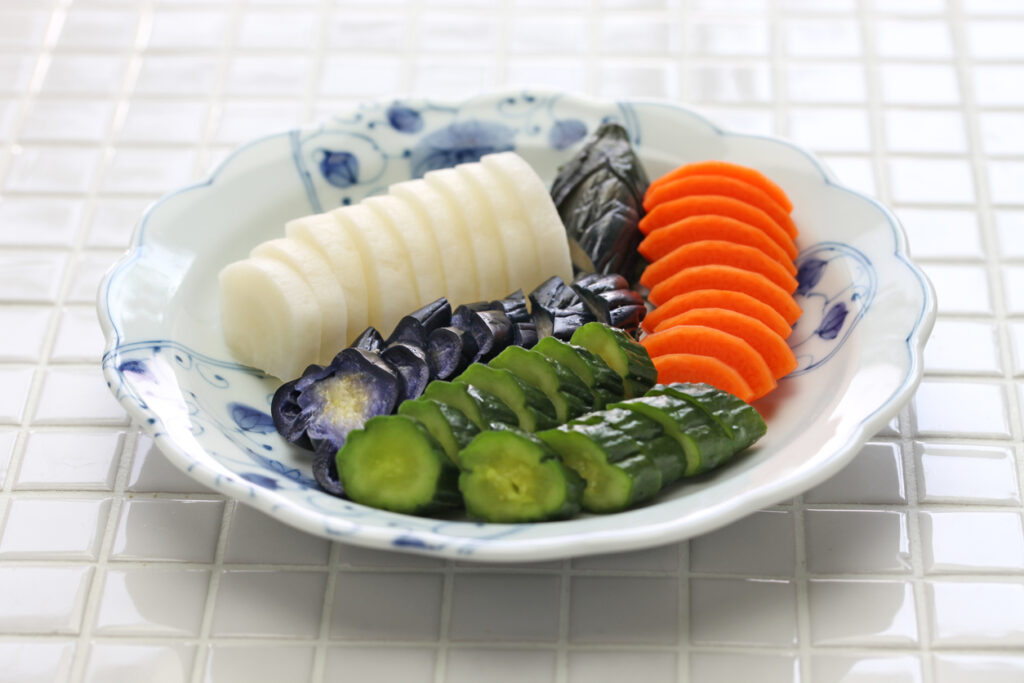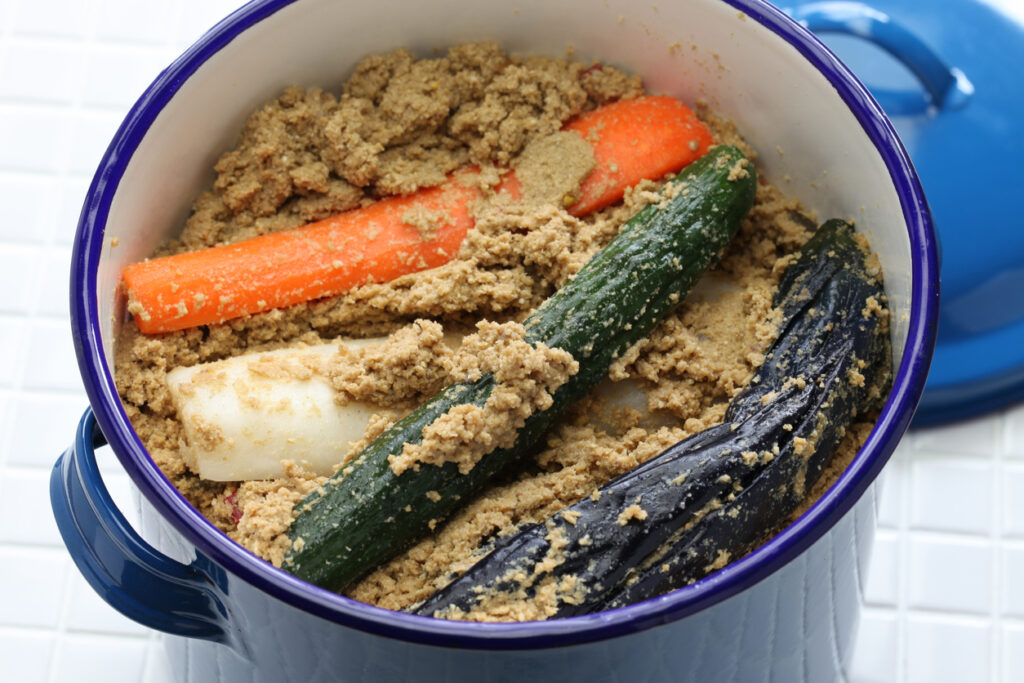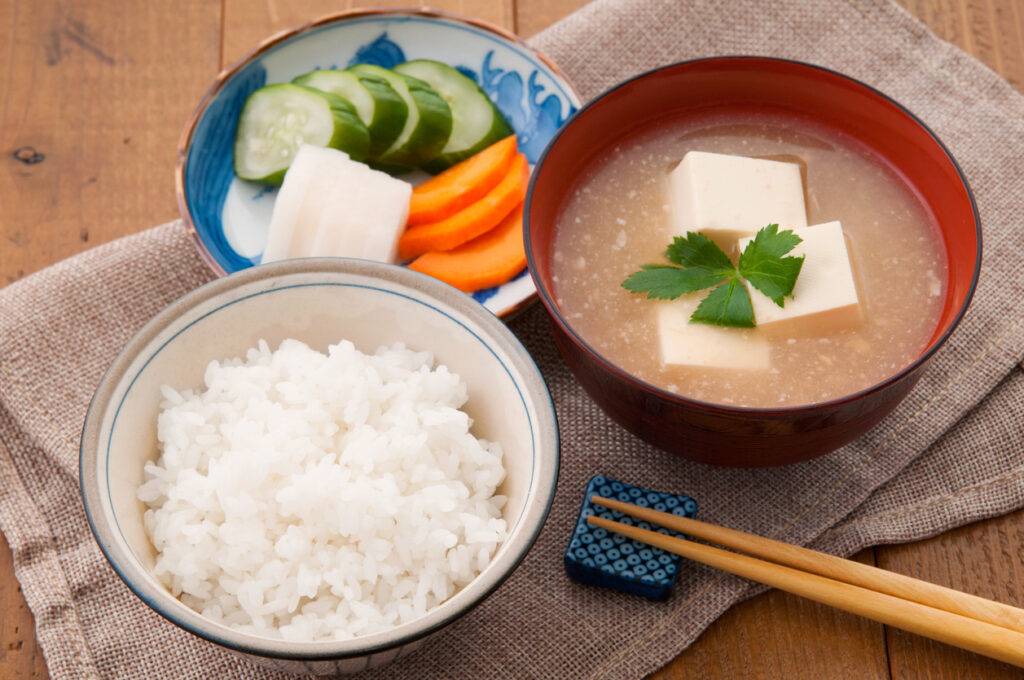Japanese Superfoods: Nukazuke
These Traditional Pickles Are Packed With Benefits
We can gain so much knowledge and inspiration from Japanese elders on their traditional diet and way of living.
My neighbor, a nearly 90-year-old, super-genki (healthy), giggling and beautiful Japanese lady has maintained an impressive fermenting pot of goodness for over half her lifetime, making all sorts of nakazuke with it!
What Is Nukazuke?
 © Photo by iStock: bonchan
© Photo by iStock: bonchanNukazuke are pickled vegetables specially made by being buried in a bed of nukadoko, a fermented rice bran paste. Vegetables are cured in the nukadoko bed for two weeks to several months until they’re full of umami flavor and enriched with various health benefits.
The nukadoko bed, which resembles damp sand, is started simply with rice bran paste and salt water. Some may also contain kombu, ginger or miso. The nukadoko is consistently reused and preserved to hold the vegetables. In fact, it requires daily hand mixing or the batch can be destroyed. The one I encountered, was over 50 years old!
Nukazuke Health Benefits
 © Photo by iStock: bonchan
© Photo by iStock: bonchanIf you’ve been following some of my previous articles, like those on miso and natto, you will understand the strong correlation between fermented foods and the overall good health of many Japanese people. Most importantly, fermented foods are beneficial in aiding digestion and building a good immune function, which can lead to an overall healthy body free from disease. They have also been shown to improve allergies and skin conditions in some people.
Once the nukadoko bed has been mixed, the active cultures come alive to form a batch of good, healthy probiotics ready to ooze their goodness into the vegetables.
Some of the vegetables that can be added to the nukadoko bed include:
- Cucumber
- Cabbage
- Pumpkin
- Eggplant
- Daikon
- Carrots
Not only does the fermentation process preserve the vegetables, but it also increases the nutritional content of some vitamins and minerals compared to eating them in their original state. A variety of nukazuke vegetables can increase your intake of nutrients such as vitamins A, B1, B2, B6, calcium and fiber.
Vitamin B1, also known as thiamine, is essential for breaking down carbohydrates for energy and plays a huge role in keeping the nervous system happy. A deficiency in this vitamin can lead to fatigue, indigestion, stress and tingling. It has been noted that vitamin B1 in daikon can be increased up to 16 times once fermented in nukadoko.
How To Use It
 © Photo by iStock: karinsasaki
© Photo by iStock: karinsasakiIf you want your own nukadoko to make nukazuke, you can grab a starter from a pre-existing batch or start your own from scratch. Personally, due to the intense smell, I don’t think I could keep up with mixing it with my bare hands every day! I’ll just stick to buying pre-pickled nukazuke vegetables that are already made and ready to eat.
Finding a local seller at a market or store with a fresh batch made is a much-preferred option—especially for those who want to avoid any added preservatives or nasty ingredients. However, you can buy them from most supermarkets in the cool section with a wide variety of pickled foods.
Nukazuke vegetables are often served as a side dish with meals as a condiment or palate cleanser between courses. To make your own Japanese-inspired, nutritious meal that is sure to impress your guests, try out this simple course:
- 1 small bowl of white or brown rice with a sprinkle of sesame seeds
- 1 small bowl of nukazuke
- 1 bowl of miso soup with tofu and wakame
- 1 packet of natto with tamari and green onions
- 1 piece of grilled fish
Do you eat the nukazuke that often comes served with various Japanese foods? If not, you might want to reconsider next time!











